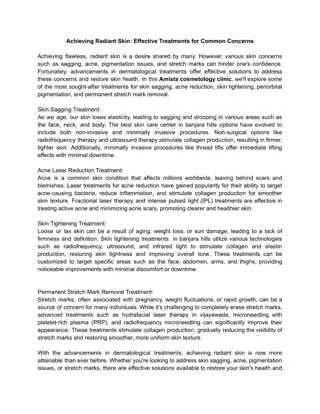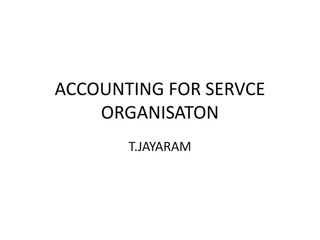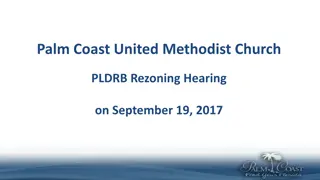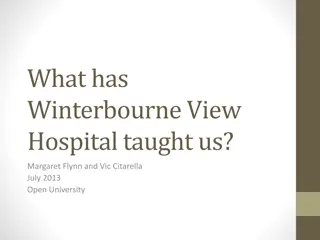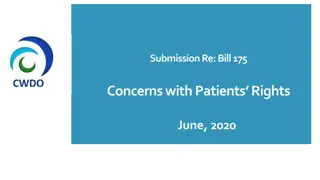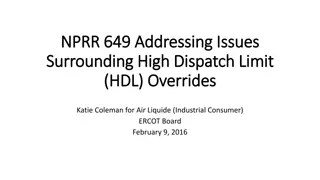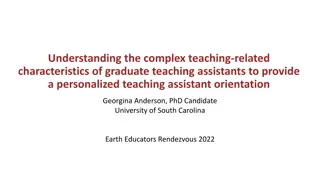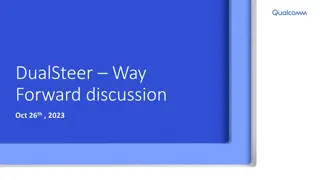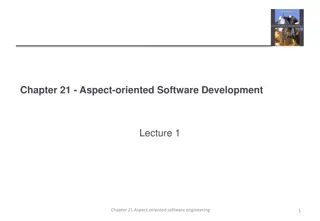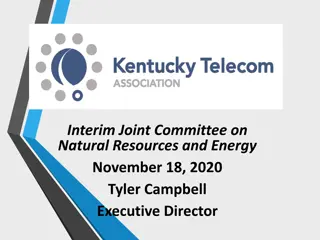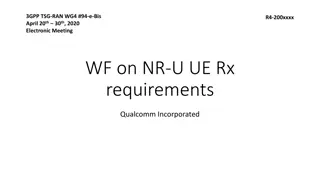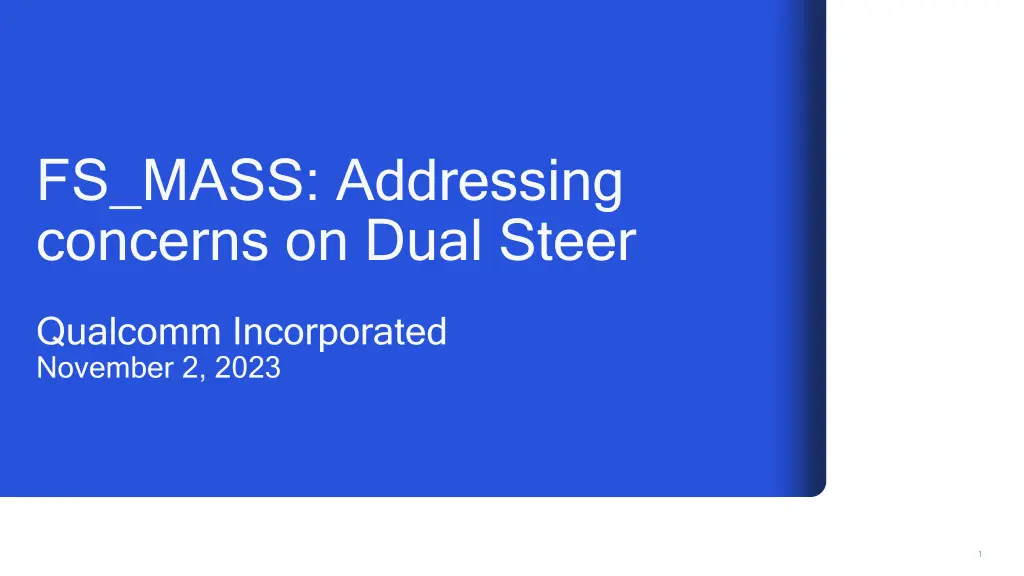
Addressing Concerns on Dual Steer by Qualcomm - Latest Updates
Explore the latest developments from Qualcomm addressing concerns on Dual Steer, including issues related to UEs with two active 3GPP accesses and UL power limitations. Discover how Qualcomm is working towards solutions to overcome these challenges effectively.
Download Presentation

Please find below an Image/Link to download the presentation.
The content on the website is provided AS IS for your information and personal use only. It may not be sold, licensed, or shared on other websites without obtaining consent from the author. If you encounter any issues during the download, it is possible that the publisher has removed the file from their server.
You are allowed to download the files provided on this website for personal or commercial use, subject to the condition that they are used lawfully. All files are the property of their respective owners.
The content on the website is provided AS IS for your information and personal use only. It may not be sold, licensed, or shared on other websites without obtaining consent from the author.
E N D
Presentation Transcript
FS_MASS: Addressing concerns on Dual Steer Qualcomm Incorporated November 2, 2023 1
Introduction In the most recent SA1 and SA Plenary meetings some concerns were raised on the Dual Steer ongoing work in SA1 and proposed study in SA Plenary/SA2: 1. No support for UEs with two simultaneously active 3GPP accesses (see SP-231072) 2. UE UL power limitations for two simultaneously active 3GPP accesses (see S2-2311187) 3. System/deployment complexity (see SP-231072) 4. New requirements violate NPN principles (see SP-231072) 5. Fast PLMN reselection (see S2-2311187) 2
1. 1. No support for UEs with two simultaneously active 3GPP accesses Issue ( Issue (SP-231072 slide 2) ) [ ] it is impossible to achieve [potential new requirements] without involving RAN (e.g. dual radio requires RAN analysis). Reply Reply As pointed out in RP-231461, the RAN2 led work item on Dual Transmission/ Reception (Tx/Rx) Multi-SIM for NR (NR_DualTxRx_MUSIM) is introducing in Rel Rel- -18 18 the support for MUSIM procedures to operate in RRC_CONNECTED state simultaneously to two networks. in Most importantly, the following have already been agreed For Rel-18 MUSIM dual active operation, UE is configured with the band-filter list by the NW A in the OtherConfig for forbidden/affected band signalling. See (R2-2311272) 3
1. 1. No support for UEs with two simultaneously active 3GPP accesses Reply (continued) Reply (continued) Other examples from existing In TS 23.501 cl. 5.16.3.5 (for UE supporting Dual Registration in EPC and 5GC): NOTE 1: In this release of the specification, the exact logic of which PDU sessions are kept in which system for Dual Registration UE with selective transfer of certain PDU Sessions as defined in clause system for Dual Registration UE with selective transfer of certain PDU Sessions as defined in clause 5.17.2.3.3, is left up to UE implementation 5.17.2.3.3, is left up to UE implementation. The voice centric UE will keep the PDU Session used for IMS services to a system that supports voice over IMS. The voice centric UE can re-register with the IMS (if needed) when the IMS PDU session is transferred between 5GS and EPS. In TS 23.501 cl. D.4 (for UE supporting simultaneous SNPN and PLMN access): A UE supporting simultaneous connectivity to an SNPN and a PLMN applies the network selection as applicable for the access and network for SNPN and PLMN respectively. Whether the UE uses SNPN or PLMN for its services is implementation dependent. existing SA2 specifications: which A UE supporting simultaneous connectivity to an SNPN and a PLMN applies the cell (re-)selection as applicable for the access and network for SNPN and PLMN respectively. Whether the UE uses SNPN or PLMN for its services is implementation dependent. Confidential and Proprietary Qualcomm Technologies, Inc. and/or its affiliated companies. 4
2. 2. UL power limitations for two simultaneously active 3GPP accesses Issue ( Issue (S2-2311187 clause 2, bullet a) ) With MUSIM, and with Dual Steer (especially with no RAN impact ) there would be a hard split of the UE s uplink power between the two 3GPP accesses and this would reduce coverage, and, as operators are likely to have planned contiguous coverage based on the UE having its full power available, this may lead to severe service degradation for the customer. Reply Reply The target scenarios considered for DualSteer assume that the UE has available uplink power to transmit on both the primary and the secondary link, thus providing an increase of throughput/ capacity (or reliability) with the same or better coverage, compared to using only one link (i.e., when the primary link capacity/quality is limited). A similar principle applies to all multi-carrier/link/connectivity solutions (including carrier aggregation/dual connectivity) DualSteer traffic (and power) split can be configurable and dynamic ATSSS already provides some flexible steering rules and criteria (including UE power aspects). Such rules can be re-used and extended/optimized for dual 3GPP access. Implementation of UE traffic/power split can be smart and dynamic. UL power changes and/or power reduction can be reported to RAN. (Small) RAN optimizations can be considered and pursued as part of alignment TUs in RAN The MUSIM Rel-18 enhancements can be re-used/extended, e.g., UE --> RAN reporting change of Radio Access Capabilities (when using the second active link), measurement gaps optimization, etc. 5
3. 3. System/deployment complexity Issues Issues ( (SP-231072 slide 9) ) A. Additional specification impacts and UE/system complexity Dual cells (re)selection and Dual RRC connection require RAN impacts, which violates the assumption made for this study B. Inter-PLMN: Additional deployment complexity Coordination among operators may not be practical Reply Reply A. Dual RRC and (re)selection do not necessarily require RAN impacts Minor RAN optimizations can be considered if desired (e.g., similarly to Rel-18 MUSIM enhancement (see issue #1) B. Coordination among operators required is similar to roaming agreement and involves only CN interfaces. This is certainly less complex that deploying CA or DC inter-PLMN which requires RAN sharing agreements. 6
4. 4. Violation of NPN principles Issues Issues ( (SP-231072 slide 9) ) A. UP & SMF interconnection between PLMN and SNPN violate the SNPN principle and requires interaction with network functions (e.g.. UPF/SMF) provided by PLMN B. Using both PLMN and PNI-NPN slices at the same time violates the slice principle and using two slices for the same service Reply Reply A. We agree on the SNPN limitation (as per today specifications). For Rel-19, only the simplified scenario for PLMN access over SNPN using N3IWF is considered which is already supported in existing specs (see TS 23.501 cl. D.3 and D.4). With this assumption, there is no violation of NPN principles. B. The scenario of using two different slices for the same service at the same time has never been discussed. Therefore, there is no principle to violate. 7
5. Fast PLMN reselection 5. Fast PLMN reselection Issue Issue ( (S2-2311187 clause 4) ) The use case that would benefit many customers is the fast movement to another PLMN when service is degrading. Companies are requested to consider fast PLMN reselection as an alternative to Dual Steer. Reply Reply We are OK with considering fast PLMN reselection as part of the DualSteer work in SA2. 8

